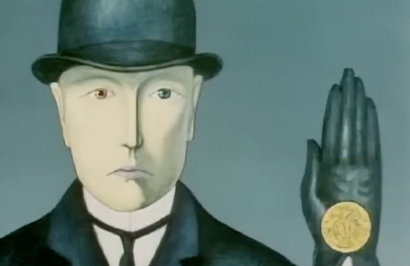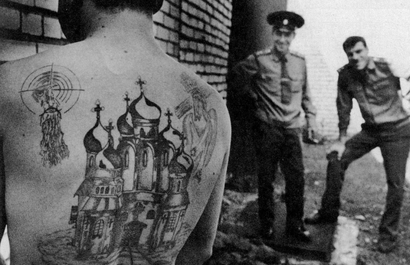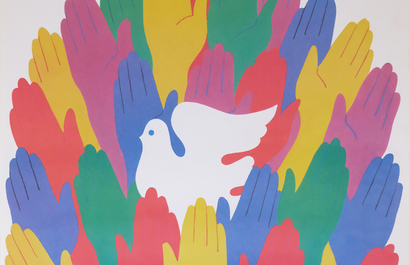Soviet Logos: The Lost Logos of a Socialist Utopia

Logos are the badge of capitalism. They distinguish one brand from its competitor. In the Soviet Union, the state controlled all aspects of production. Logos weren’t necessary. Yet, Soviet designers created them by their thousands. Lithuanian designer, Rokas Sutkaitis, explores their hidden history in his new book.
The Rise of the Logo
The Cold War rivalry between the USA and the USSR extended beyond the battle field. Both superpowers were also in a battle for supremacy of ideology, a cosmic struggle between communism and capitalism. The Kitchen Debates of the late 50s led to both countries competing in the home over standards of living. American had colour televisions, and the luxury of choice. The Soviets did not. It was a culture war where the USA outshone the USSR.
Under the Soviet system, the state controlled all aspects of production. State sponsored factories saw no need to innovate or capture new market share, as demand outstripped supply. Factories would often turn out the same unchanged model refrigerator or car for decades at a time. Quality control was almost non-existent. Defects were an accepted and expected part of Soviet life. But in the 1960s, a new competitor emerged. Western music, clothing and culture was finding its way into the USSR, often in semi-legal ways. Their products were covered in logos, and the Soviets couldn’t keep up.

Designing in a Socialist World
In 1962, the Soviet state passed a new trademark law. Its purpose was to distinguish goods by an individual identifiable mark. All manufacturers would be required to mark their products or packaging within six months of the law coming into effect. But, Soviet marks were different from their western equivalent. Their purpose was to educate the customer on products, not advertise them like their capitalist counterparts.
The unprepared graphic design industry was flooded with orders for new marks or logos. At first logos were just for farms and factories, but soon institutes, museums, and other professions wanted one too. Packaging and advertising, both unestablished industries in the Soviet Union, were created almost overnight. There were few companies that even had design or marketing divisions. For the most part, a competition was held, with architects, designers, engineers, or even employees entering for a chance to win the 250 ruble prize.
The design brief was simple. The logo should be functional and convey the nature of the organisation it represents. Technological limitations meant that designers would avoid complex illustrations, and instead used clear geometric shapes with few lines. High production costs meant black and white logos were favoured over other colours. Even as reproduction quality improved over the next few decades, the graphic features of Soviet logos remained unchanged.

The Power of Symbols
The Soviet state knew the power of symbols. Small in nature, logos were similar to matchboxes and badges. They were pocket-sized reminders of communism. But, logos were never really used to spread communist ideology. While matchboxes and badges often had Lenin’s likeness printed on them, logos designs avoided political iconography almost entirely. Thousands of factories were named after Lenin or sat on Lenin street, but almost none of them incorporated their namesake into their visual identity. Logos were a departure from the communist status-quo. They advocated for differentiation in a society that prioritised sameness over everything else.
The introduction of the logo changed nothing and everything. The logo was meant to force Soviet companies to take responsibility for their product, an implicit guarantee of quality. But, little changed. Companies made little effort to innovate or improve their product or service; after-all the state was still buying it. Logos were also undermined by the poor reproduction quality of the mark on products and packaging. When the USSR collapsed in the early ‘90s, many state owned companies collapsed too. The ones that didn’t were quickly privatised, and discarded any symbol of their communist past. Undervalued by society and the artists who created them, most were never properly archived and preserved.
Rokas Sutkaitis has dedicated years to finding old designs and carefully redrawing them. You can see some of the striking logos from his book here on Instagram. Shop our vintage typography posters below or explore the collection here.






